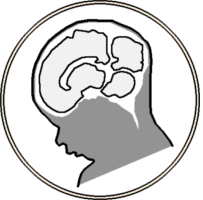Sadhwani, Anjali, David Wypij, Valerie Rofeberg, Ali Gholipour, Maggie Mittleman, Julia Rohde, Clemente Velasco-Annis, et al. 2022. “Fetal Brain Volume Predicts Neurodevelopment in Congenital Heart Disease”. Circulation.
Abstract
Background: Neurodevelopmental impairment is common in children with congenital heart disease (CHD), yet postnatal variables explain only 30% of the variance in outcomes. To explore whether the antecedents for neurodevelopmental disabilities might begin in utero, we analyzed whether fetal brain volume predicted subsequent neurodevelopmental outcome in children with CHD. Methods: Fetuses with isolated CHD and sociodemographically comparable healthy control fetuses underwent fetal brain MRI and 2-year neurodevelopmental evaluation with the Bayley Scales of Infant and Toddler Development (Bayley-III) and the Adaptive Behavior Assessment System (ABAS-3). Hierarchical regression evaluated potential predictors of Bayley-III and ABAS-3 outcomes in the CHD group, including fetal total brain volume adjusted for gestational age and sex, sociodemographic characteristics, birth parameters, and medical history. Results: The CHD group (n=52) had lower Bayley-III cognitive, language, and motor scores than the control group (n=26), but fetal brain volumes were similar. Within the CHD group, larger fetal total brain volume correlated with higher Bayley-III cognitive, language, and motor scores, and ABAS-3 adaptive functioning scores (r=0.32-0.47; all P<0.05), but not in the control group. Fetal brain volume predicted 10 21% of the variance in neurodevelopmental outcome measures in univariate analyses. Multivariable models that also included social class and postnatal factors explained 18-45% of the variance in outcome, depending on developmental domain. Moreover, in final multivariable models, fetal brain volume was the most consistent predictor of neurodevelopmental outcome across domains. Conclusions: Small fetal brain volume is a strong independent predictor of 2-year neurodevelopmental outcomes and may be an important imaging biomarker of future neurodevelopmental risk in CHD. Future studies are needed to support this hypothesis. Our findings support inclusion of fetal brain volume in risk stratification models and as a possible outcome in fetal neuroprotective intervention studies.
Last updated on 02/27/2023
